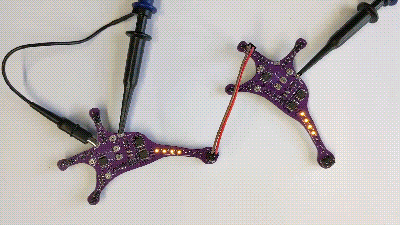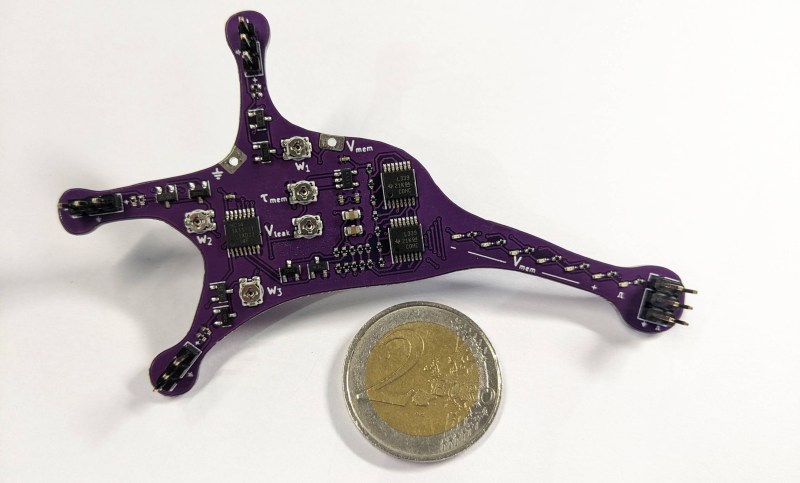Brains are the most complex systems in the universe, but their basic building blocks are surprisingly simple — the complexity arises from billions of neurons, axons and synapses working together. Simulating an entire brain therefore requires vast computing resources, but if it’s just a few cells you’re interested in, you don’t need much: a handful of op-amps and transistors will do the job, as [Sebastian Billaudelle] has demonstrated. He has designed an electronic neuron called Lu.i that does everything a real neuron does, in a convenient package suitable for educational use.
[Sebastian]’s neuron implements what’s known as the leaky integrate-and-fire model, first proposed by [Louis Lapicque] as a simple model for a neuron’s behavior. Basically, the neuron acts as an integrator that stores all incoming charge in a capacitor and generates a spiky output signal once its voltage reaches a certain threshold level. The capacitor is slowly discharged however, which means the neuron will only “fire” when it gets a strong enough input signal.
 A couple of MCP6004 op-amps implement this model, with an LM339 comparator acting as the threshold detector. The neuron’s inputs are generated by electronic synapses made from logic-level MOSFETS. These circuits route signals between different neurons and can be manually set to either source or sink current, thereby increasing or decreasing the neuron’s voltage level.
A couple of MCP6004 op-amps implement this model, with an LM339 comparator acting as the threshold detector. The neuron’s inputs are generated by electronic synapses made from logic-level MOSFETS. These circuits route signals between different neurons and can be manually set to either source or sink current, thereby increasing or decreasing the neuron’s voltage level.
All of this is built onto a neat purple PCB in the shape of a nerve cell, with external connections on the tips of its dendrites. The neuron’s internal state is made visible by an LED bar graph, giving the user an immediate feel for what’s going on inside the network. Multiple neurons can be connected together to form reasonably complex networks that can implement things like oscillators or logic functions, examples of which are shown on the project’s GitHub page.
The Lu.i project is a great way to teach the basics of neuroscience, turning dry differential equations into a neat display of signals racing around a network. Neurons are fascinating things that we’re learning more about every day, enabling things like brain-computer interfaces and neuromorphic computing.


















> Brains are the most complex systems in the universe,
They may be the most complex systems in this tiny little corner of the universe….
I dont think the brain of a fish is worthy of this statement. The ‘most complex systems’ probability is very low IMO.